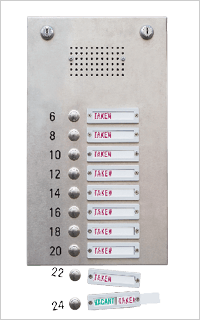If renting and city living are the new black, how can REALTORS® respond?
By James Cappio
You’ve seen them: story after story throughout the media, from The Atlantic to CNBC, from Forbes to NPR, about how the U.S. is seeing a move away from homeownership and toward rentals in tandem with a move away from suburbs toward cities. But is this change really happening? Does it represent a permanent shift in attitude? And what do REALTORS® have to do to serve the special needs of this growing market segment?
SOBERING STATISTICS
A wide variety of studies are a testament to this shift:
- The Joint Center for Housing Studies at Harvard reports that The renter share of all U.S. households climbed to 35 percent in 2012, bringing the total number to 43 million by early 2013.
- Freddie Mac reports that 2014 saw starts on 341,000 units with more than five apartments, the fastest pace in 25 years.
- Census data for the fourth quarter of 2014 show an apartment vacancy rate of 7.0 percent; the National Association of Home Builders says this is the lowest vacancy rate since the end of 1993.
- At the same time, according to Freddie Mac, rents increased an average of 3.6 percent in 2014 and nearly 11 percent over the last three years. According to the research firm Reis, Inc., the average monthly rent in the U.S. is $1,124.38.
- Perhaps surprisingly, the Harvard study found that the increase in rentals between 2004 and 2013 applies to every five-year age group except people aged 75 and over, although the so-called millennials are especially hard hit; Census data show that the homeownership rate for Americans 35 and under is a record low 36.2 percent.
- Census data for 2013 show that net migration is actually still from the cities to suburbs (3.78 million to the suburbs, 2.89 million to the cities; for ages 2029, the numbers are 1.04 million and 797,000). However, Reis, Inc.s survey of large cities disclosed a record-low 4.1 percent vacancy rate as of the second quarter of 2014, affirming that the market in the biggest, most desirable cities, such as New York (1.64 percent vacancy rate in Manhattan in July 2014), Los Angeles (3.3 percent), Chicago (3.5 percent), and San Francisco (2.9 percent), paints quite a different picture.
REALTORS® AND RENTERS
Top REALTORS® in the hottest rental markets see these trends firsthand, and they understand the reasons for the shift. Laura Shifrin, CRS, of Townsend Center Realty in Townsend, Massachusetts, observes that there have been so many foreclosures in the last 10 years. I have more rental applications now than I have available units. Jim Kinney, CRS, CRB of Baird & Warner in Chicago, notes the preponderance of young people making up that demand. Every time I bid on an apartment, Ive been up against at least a dozen millennials. James Chen, CRS, of 13 East Realty, Inc., in Los Angeles, points out that his numerous millennial clients rent because they cant afford to buy.
Kinney agrees that millennials want to be in the city: Many of them dont even have cars. He adds that student debt and the unfavorable job market for young people are holding them back from buying. Proof-of-income qualifications in the major markets are strict. Thats helping the rental market explode.
IF YOU OVERBUILD IT, WILL THEY KEEP COMING?
A Joint Center for Housing Studies at Harvard report notes, The rapid expansion of production has raised alarms about potential overbuilding, especially if the millennials do move back out to the suburbs once they can afford it. However, REALTORS® on the ground see little cause for concern. Jim Kinney, CRS, observes that the boom in rental construction has meant a bust in construction on the sales side in Chicago, any sales building project marketed since 2008 was actually initiated before the 2008 recession so that if rentals were to be overbuilt, the market could simply make up for that decade of missing product through conversion to condos.
REALTORS® who work with renters use various means to help. Kinney refers rental clients to a partner agency that specializes in rentals. Shifrin lists vacancies in the specific complexes she represents on Realtor.com. Chen has investigated innovative solutions for his rental clients, such as micro-lot subdivisions of 500 to 600 square feet.
REVENGE OF THE BURBS?
Chen thinks there has been a generational shift: Young people want to be able to walk, cycle or take public transit to work, and to enjoy the amenities of a vibrant downtown. Recently, though, there has been a backlash against this idea. A January 2015 survey by the NAHB found that 68 percent of millennials would prefer to live in the suburbs, as opposed to only 10 percent in the cities. The appearance to the contrary is a function of age, finances and marital status.
Kinney agrees. He feels that many millennials have been scared out of the market because they dont want to be trapped with all their equity in an asset they view as unstable, but will come back when they start families. They want a house in the suburbs as much as boomers. With the job market improving, household formation rising, and Fannie Mae, Freddie Mac and the Federal Housing Administration offering more affordable mortgages, we may find out how permanent the shift is within the next few years.
For more information, visit http://www.realtor.org/field-guides/field-guide-to-buying-vs-renting.








